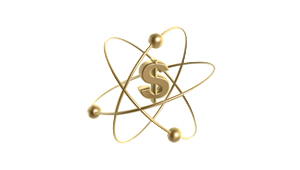Innovation: The Value of Your Ideas
by
 So you had a great idea and you think it might be worth a few bucks. That’s excellent, but your intuition will probably not be enough to move forward with the idea. Not to mention that you may have to spend a few thousand dollars on IP protection before you move forward, so you’ll probably want to be somewhat certain your idea has value worthy of commercialization before you go spending that kind of money. In order for you to ballpark the value of your invention, I’m going to give you some guidelines to perform your own very rough market research using nothing but your analytical capability and the tools you probably use everyday.
So you had a great idea and you think it might be worth a few bucks. That’s excellent, but your intuition will probably not be enough to move forward with the idea. Not to mention that you may have to spend a few thousand dollars on IP protection before you move forward, so you’ll probably want to be somewhat certain your idea has value worthy of commercialization before you go spending that kind of money. In order for you to ballpark the value of your invention, I’m going to give you some guidelines to perform your own very rough market research using nothing but your analytical capability and the tools you probably use everyday.
.
Market Size
The first thing you’re going to want to do is determine the market size. In other words, how many potential customers for your invention are there? A quick-and-dirty way to estimate this is to do a search for a relevant term in Pubmed and/or Highwire. For example, if you had an idea for a new type of qPCR product, search for qPCR. Divide that number by a factor which you feel is normal for how much the average lab in the relevant field publishes. You now know your total potential academic customer base, but there may be an industry customer base that doesn’t publish nearly as much, so you may want to augment that number. Again we’re working with ballparks here – think about if pharma or biotech companies would be likely to use your invention and how much they would use it. As a whole, academic life science research is a larger component of the market for life science research products than is biotech and pharmaceutical R&D, so be careful not to overestimate. Your best judgment will be okay here, but put some thought into it.
.
Market Penetration
Now you’ll want to figure out what a reasonable market penetration for your invention would be. This will be based largely on how much of a competitive advantage your invention would have and how much competition there is. Is there one or more large and entrenched competitors? Would the advantage be so great that it would signal a paradigm shift in your field? Again, we’re only looking for a ballpark so just use your best judgment.
.
Price
Next, estimate what the price of your invention would be. Take a value-based approach. What do people currently use and what does that cost? How much better is your invention and how much do you think that would be worth?
.
Product Usage
Finally, the nature of the product must be taken into account top determine how often the users would need to purchase the product. Is the invention a consumable product that will be a recurring revenue stream? Will customers only need to purchase it once? Put your idea in terms of how many purchases per year each customer may need to make (this number can be a fraction).
.
Revenue Potential
Now you’ll be able to determine the total revenue potential of the product, and from that estimate the value to you. Take the estimates you just made and multiply: [market size] x [market share] x [price] x [purchases per year]. You now have a ballpark estimate for how much revenue your product will bring. To estimate how much that could be worth to you personally, consider that licensing agreements generally bring in a percentage of revenues that is in the single digits. The exact figure will depend primarily on the stage of the invention (is it just an idea or do you have a proof-of-concept or prototype?). If you sell instead of license, you could bring in many times that depending on the market risk and estimated life of the technology.
.
Different industry segments will have different thresholds on what will be considered a worthwhile product to pursue, but if you estimate the value and think that it is indeed worthwhile, then it’s time to consider the next steps, which is exactly what my next post will be about – taking your idea from concept to commercialization, and some important things you’ll need to consider when doing so.
.
Carlton Hoyt, Ph.D. is a scientist-turned-businessperson and is principal consultant and co-founder of BioBM Consulting, which provides commercialization services to life science inventors and companies. He welcomes you to contact him directly at [email protected].
.
.
Still wondering if you want to pursue your ideas? Check out the other articles in the series,
.
.


Innovation: Concept to Commercialization
wrote on April 1, 2011 at 10:00 am
[…] you’ve had your eureka moment and you’ve done the rough math to figure out that your innovation is probably worth pursuing. Now […]